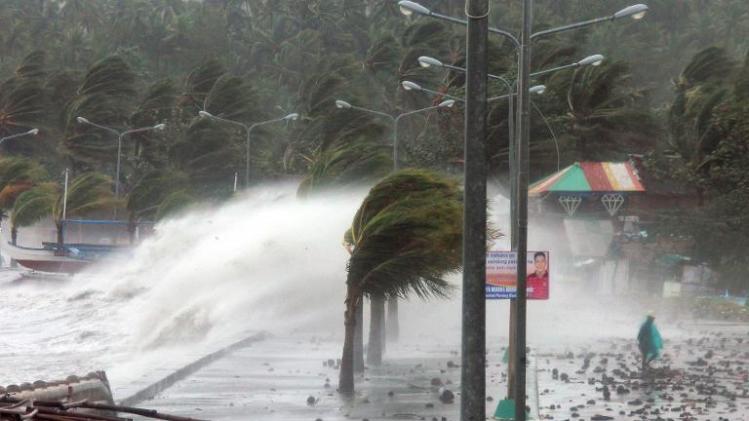
Super Typhoon Haiyan tore into the eastern islands of Leyte and Samar on Friday with sustained winds of around 315 kilometres (195 miles) an hour, then tormented millions of people as it ripped across the Southeast Asian archipelago.
More than four million people were affected across 36 provinces, the government said.
Many of the worst-hit areas remained cut off from communications on Saturday, with power and telephone networks destroyed, but initial accounts from some areas reached by the military and the media painted a deeply ominous picture.
In Tacloban, the capital of Leyte, the city's airport manager reported more than 100 bodies were littered in and around the facility, with at least 100 more people injured.
"The terminal, the tower, including communication equipment, were destroyed," Civil Aviation Authority of the Philippines deputy chief John Andrews told AFP, as he recounted the airport manager's assessment.
Large areas of Tacloban, with a population of about 220,000 people, were flattened, according to an AFP photographer who reached the coastal city aboard a military plane carrying relief supplies.
Storm surges more than three metres (10 feet) had pounded the area, the Philippine Red Cross said.
In scenes reminiscent of tsunami damage, some houses in Tacloban were completely destroyed, with piles of splintered wood lying on concrete slabs, while others had just the stone frames remaining.
Almost all the trees and electric posts were torn down, while cars were overturned.
Some dazed and injured survivors wandered around the carnage asking journalists for water, while others sorted through what was left of their destroyed homes.
Eight bodies had been laid to rest inside the airport's chapel, which had also been badly damaged.
A journalist for local television network GMA also reported seeing about 20 bodies piled up in a church in Palo, a coastal town about 10 kilometres south of Tacloban.
The initial reports from Tacloban and Palo raised fears of mass casualties, with Haiyan having devastated many other communities across the central Philippines that remained cut off from communications.
"We have reports of collapsed buildings, houses flattened to the ground, storm surges and landslides," Philippine Red Cross chief Gwendolyn Pang told AFP, giving an assessment across the whole region.
"But we don't know really, we can't say how bad the damage is... hopefully today we can get a better picture as to the effects of the super typhoon."
Another area of concern was Guiuan, a fishing town of about 40,000 people on Samar that was the first to be hit after Haiyan swept in from the Pacific Ocean. Pang said contact had not yet been made with Guiuan.
She also said relief workers were trying reach Capiz province, about 200 kilometres west of Tacloban, on Panay island where she said most of the region's infrastructure had been destroyed and many houses "flattened to the ground".
Fifteen thousand soldiers had been deployed to the disaster zones, military spokesman Lieutenant-Colonel Ramon Zagala told AFP.
"We are flying sorties to bring relief goods, materials and communication equipment," Zagala said.
He said helicopters were also flying rescuers into priority areas, while infantry units deployed across the affected areas were also proceeding on foot or in military trucks.
Haiyan's wind strength, which remained close to 300 kilometres an hour throughout Friday, made it the strongest typhoon in the world this year and one of the most intense ever recorded.
It exited into the South China Sea on Saturday and tracked towards Vietnam, where more than 100,000 people had begun evacuating from vulnerable areas, Vietnamese state media reported.
Philippine
authorities expressed confidence on Friday that only a few people had
been killed, citing two-days of intense preparation efforts led by
President Benigno Aquino.
Nearly 800,000 people in danger zones
had been moved to evacuation centres, while thousands of boats across
the archipelago were ordered to remain secured at ports. Hundreds of
flights were also cancelled.The government expressed alarm on Saturday that the much-hyped preparations may not have been effective as initially thought.
"The president is asking why there were still fatalities," Cabinet Secretary Rene Almendras told reporters.
An average of 20 major storms or typhoons, many of them deadly, batter the Philippines each year as they emerge from the Pacific Ocean.
The Philippines suffered the world's strongest storm of 2012, when Typhoon Bopha left about 2,000 people dead or missing on the southern island of Mindanao.








No comments:
Post a Comment